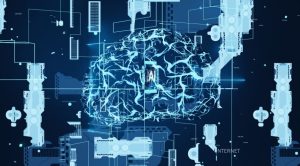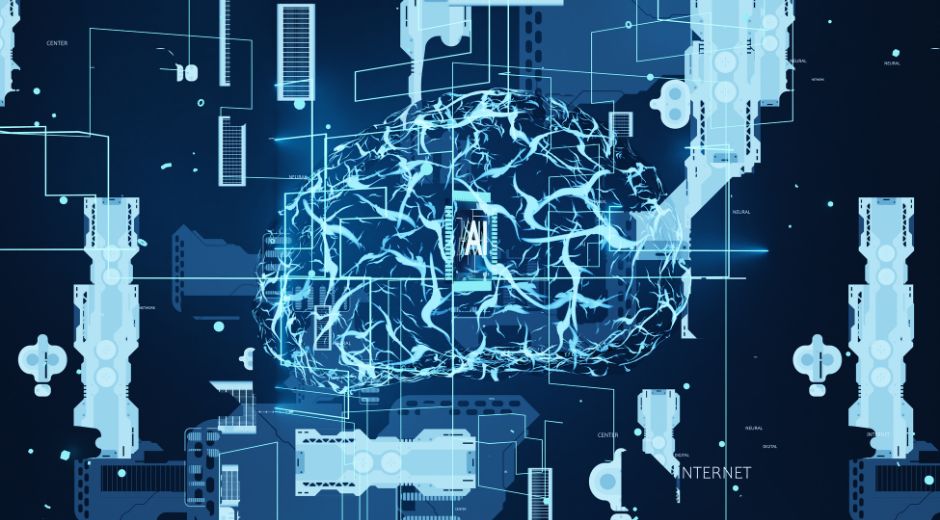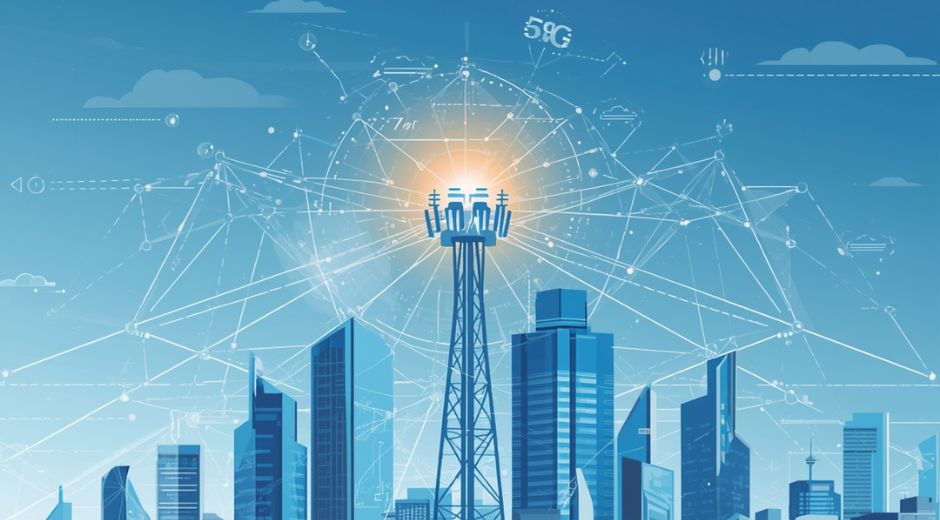Edge Intelligence: The Next Frontier of Smarter, Faster, and Decentralized Computing
Technology is evolving faster than ever, and at the center of this acceleration lies a powerful shift in how machines process information. The rise of Edge Intelligence is transforming the digital landscape by combining artificial intelligence with edge computing. Instead of sending data back to distant cloud servers, devices now think, analyze, and make decisions directly where data is created.
This change is not just technical; it is revolutionary. From self-driving cars to smart cities and advanced healthcare, Edge Intelligence is redefining what speed, privacy, and efficiency mean in a connected world.
What Is Edge Intelligence?
At its core, Edge Intelligence is the fusion of two technologies: edge computing and artificial intelligence (AI). Edge computing refers to processing data locally, near its source, instead of transmitting it to centralized data centers. When combined with AI, this allows devices to make real-time decisions without relying on external connectivity.
Imagine a factory robot that detects a malfunction and corrects it instantly, or a car that analyzes its surroundings and brakes automatically within milliseconds. These systems rely on Edge Intelligence, where processing happens directly on embedded chips or local servers.
This approach dramatically reduces latency, increases reliability, and improves privacy by keeping sensitive data closer to the source.
Why Edge Intelligence Matters
In the era of cloud computing, most data was sent to distant servers for analysis. While this model worked for many years, it struggled with real-time applications. Streaming video, industrial automation, and autonomous systems all require instant responses, and the delays caused by cloud transmission can be costly or even dangerous.
Edge Intelligence solves this problem by decentralizing computation. It brings intelligence closer to users, machines, and sensors. The result is faster performance, lower bandwidth usage, and stronger data protection.
This local-first approach has become essential as the Internet of Things (IoT) continues to grow. With billions of devices generating continuous streams of data, centralized systems simply cannot handle the load efficiently.
How Edge Intelligence Works
A typical Edge Intelligence system involves three layers of operation:
-
Edge Devices: Sensors, cameras, and machines that collect data and run lightweight AI models.
-
Edge Servers: Local servers or gateways that aggregate data from multiple devices for further analysis.
-
Cloud Coordination: Centralized servers that store historical data, retrain models, and distribute updates back to the edge.
This architecture allows devices to process information instantly while maintaining a connection to the cloud for broader insights. Over time, AI models improve as they learn from both local and global data.
For example, in a smart traffic system, local cameras detect congestion and adjust traffic lights in real time, while cloud systems analyze patterns to predict long-term improvements.
The Evolution from Cloud to Edge
Cloud computing revolutionized digital infrastructure by offering scalability and accessibility. However, as devices became more mobile and data-heavy, the cloud’s limitations became apparent. High latency, privacy concerns, and the need for continuous connectivity prompted the development of Edge Intelligence.
This shift mirrors the natural progression of technology toward decentralization. Just as personal computers gave individuals autonomy, edge systems give devices independence.
According to Forbes, global investments in Edge Intelligence are projected to exceed 60 billion dollars by 2030, as industries race to adopt real-time decision-making systems.
Real-World Applications of Edge Intelligence
1. Autonomous Vehicles
Self-driving cars depend on split-second reactions. With Edge Intelligence, onboard computers process data from cameras, radar, and lidar sensors instantly. This ensures safety even when network connectivity is weak or unavailable.
2. Smart Manufacturing
Factories are deploying AI-powered robots that detect defects, monitor energy usage, and adapt to production needs in real time. Edge Intelligence helps machines communicate and optimize operations without sending data to remote servers.
3. Healthcare and Medical Devices
Wearable monitors, hospital sensors, and diagnostic equipment increasingly rely on Edge Intelligence to provide immediate health feedback. For instance, heart rate monitors can detect irregularities and alert doctors instantly without uploading patient data to the cloud.
4. Retail and Customer Analytics
Stores use intelligent cameras and sensors to analyze shopper behavior, manage inventory, and personalize recommendations. Local processing ensures faster responses and better customer privacy.
5. Smart Cities
Urban infrastructure powered by Edge Intelligence can adjust lighting, manage waste, monitor pollution, and control traffic autonomously. City planners can access dashboards that combine real-time sensor data with long-term insights.
Benefits of Edge Intelligence
The advantages of Edge Intelligence extend across performance, cost, and security:
-
Reduced Latency: Instant decision-making improves safety and user experience.
-
Bandwidth Optimization: Less data sent to the cloud lowers network strain.
-
Enhanced Security: Sensitive information stays local, reducing cyber risks.
-
Energy Efficiency: Optimized processing lowers power consumption.
-
Scalability: Systems grow easily without overloading central servers.
Each of these benefits contributes to a faster, smarter, and more sustainable digital ecosystem.
Privacy and Ethical Considerations
While Edge Intelligence enhances privacy by localizing data, it also introduces new ethical questions. When devices make autonomous decisions, who is responsible for errors or bias in algorithms?
Ensuring transparency and accountability in edge systems is essential. AI models must be auditable and designed to avoid discrimination. Data governance frameworks are also needed to clarify ownership and usage rights.
Regulators are already adapting. The European Union’s Artificial Intelligence Act includes specific guidelines for decentralized systems to ensure compliance with ethical and safety standards.
The Role of Artificial Intelligence
Artificial intelligence is the brain behind Edge Intelligence. Machine learning algorithms enable devices to recognize patterns, predict outcomes, and adapt to new conditions.
However, deploying AI models on the edge requires optimization. Traditional neural networks are too large for small devices, so developers use lightweight frameworks such as TensorFlow Lite or TinyML to run efficiently.
These miniaturized AI models enable everything from smart thermostats to advanced industrial systems to operate autonomously.
Challenges Facing Edge Intelligence
Despite its potential, Edge Intelligence faces several obstacles:
-
Hardware Limitations: Edge devices often lack the processing power of data centers.
-
Model Management: Updating AI models across thousands of distributed devices can be complex.
-
Interoperability: Different vendors use varying standards and protocols.
-
Security Risks: Local devices are more exposed to physical tampering or hacking.
-
Cost of Deployment: Implementing edge infrastructure requires upfront investment.
These challenges are gradually being addressed through advances in microchip design, open-source software, and global standardization efforts.
Edge Intelligence in Industry and Defense
Governments and corporations are investing heavily in Edge Intelligence for national security and industrial optimization. Defense agencies use it to analyze surveillance data, detect threats, and coordinate autonomous drones.
Meanwhile, industries like energy and logistics rely on real-time edge analytics to monitor pipelines, power grids, and transportation systems. Predictive maintenance powered by Edge Intelligence reduces downtime and prevents costly failures.
At Newspapersio.com, we cover how these applications are driving both innovation and ethical debates about data sovereignty and control.
The Green Side of Edge Intelligence
One often-overlooked benefit of Edge Intelligence is sustainability. By processing data locally, energy consumption in large data centers is reduced. This decreases carbon emissions and optimizes global energy use.
Moreover, edge systems can manage renewable energy grids, balancing supply and demand with precision. Smart sensors adjust output based on environmental conditions, ensuring efficient energy distribution.
As the world focuses on climate responsibility, Edge Intelligence is proving to be a key enabler of eco-friendly innovation.
The Integration of 5G and Edge Intelligence
The rollout of 5G networks is accelerating the adoption of Edge Intelligence. High-speed, low-latency connectivity allows seamless communication between millions of devices.
Telecommunication companies are building micro data centers closer to consumers to support autonomous vehicles, AR experiences, and industrial IoT networks. This distributed infrastructure represents the backbone of the next digital revolution.
According to Moviefil, the combination of 5G and edge systems will support real-time global connectivity, reshaping industries from transportation to healthcare.
Future Trends in Edge Intelligence
The next generation of Edge Intelligence will integrate several cutting-edge trends:
-
Federated Learning: Devices learn collectively without sharing raw data, improving privacy.
-
Neural Processing Units (NPUs): Specialized chips designed for AI computation on edge devices.
-
Autonomous Networks: Systems that configure, repair, and secure themselves automatically.
-
Hybrid Architectures: Combining cloud, edge, and fog computing for flexible deployment.
-
Collaborative AI: Devices working together to share knowledge dynamically.
These innovations will make the world’s systems not just smarter, but more adaptive, resilient, and efficient.
The Future of Human Interaction
As Edge Intelligence expands, humans will interact with technology in more intuitive ways. Voice assistants will anticipate needs before commands are spoken. Cars will understand driver habits. Homes will adjust lighting and temperature automatically based on mood and behavior.
This level of personalization raises both excitement and caution. Balancing convenience with control will define the next era of human-computer relationships.
Conclusion: The Intelligent Edge of Tomorrow
The world is moving from centralized computation to intelligent decentralization. Edge Intelligence represents the bridge between artificial intelligence and the physical world. It empowers devices to think independently, react instantly, and collaborate globally.
As industries embrace this evolution, society enters an age where machines become active participants in decision-making. The intelligent edge will not only make systems faster and smarter but also more human in their responsiveness.
The future of technology will not live only in the cloud but in every sensor, every device, and every moment where intelligence meets action.
The Pulse of News

Economic Blocs: How Regional Alliances Are Redefining Global Power
Economic Blocs: How Regional Alliances Are Redefining Global Power examines how nations unite through trade and policy to shape the world economy.

Blue Zones: Unlocking the Secrets of Longevity and Purposeful Living
Blue Zones: Unlocking the Secrets of Longevity and Purposeful Living explores how specific communities thrive through balance, purpose, and healthy habits.

Soundscapes: How Sonic Design Shapes Emotion and Immersion in Modern Culture
Soundscapes: How Sonic Design Shapes Emotion and Immersion in Modern Culture explores how music, noise, and silence influence perception and creativity.

Edge Intelligence: The Next Frontier of Smarter, Faster, and Decentralized Computing
Edge Intelligence: The Next Frontier of Smarter, Faster, and Decentralized Computing explores how AI and edge systems redefine real-time data processing.

Sanctions and Global Power: How Economic Pressure Shapes Modern Diplomacy
Sanctions and Global Power: How Economic Pressure Shapes Modern Diplomacy explores how nations use trade, finance, and policy to influence global decisions.

Circadian Rhythm: How Your Body’s Internal Clock Shapes Health and Performance
Circadian Rhythm: How Your Body’s Internal Clock Shapes Health and Performance explores how daily cycles influence sleep, energy, mood, and longevity.

Immersive Theater: Redefining How Audiences Experience Storytelling
Immersive Theater: Redefining How Audiences Experience Storytelling explores how interactive performance reshapes art, emotion, and audience connection.

Digital Twins: How Virtual Replicas Are Powering Real-World Innovation
Digital Twins: How Virtual Replicas Are Powering Real-World Innovation explores how this technology reshapes industries from healthcare to aviation.

AI-Driven Cybersecurity: The Future of Digital Defense in a Hyperconnected World
AI-Driven Cybersecurity explores how artificial intelligence is transforming global digital defense, reshaping threat detection, and redefining the future of technology innovation. Insights

Music Streaming Economics: How Digital Platforms Are Redefining the Global Sound Industry
Music Streaming Economics explores how digital platforms are reshaping artist revenue, consumer habits, and global entertainment.













